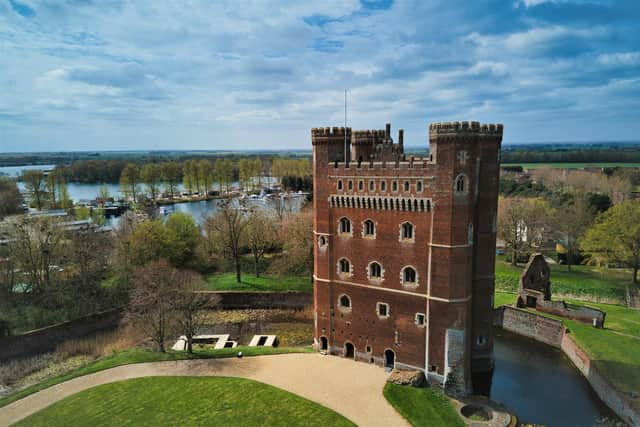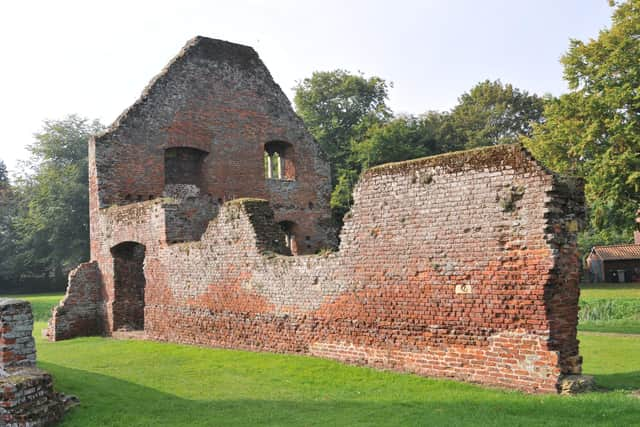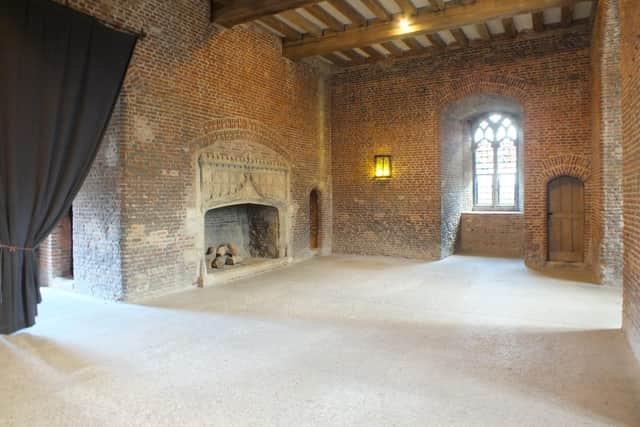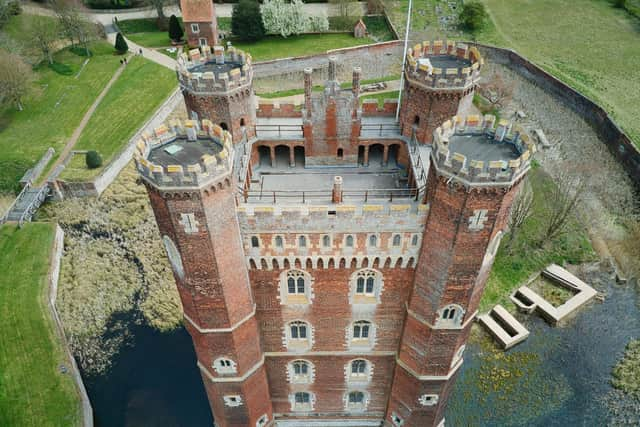Research sheds new light on Tattershall Castle
and live on Freeview channel 276
Rising from the flat Lincolnshire Fens, Tattershall Castle with its 33.5-metre-high tower, was built in the 15th century for Lord Ralph Cromwell, Treasurer to King Henry VI and was designed to display wealth, position, and power.
The understanding of how Tattershall was used has been based largely on writings from more than a century ago, but in recent years modern archaeological approaches have provided the chance to reveal more about the castle and re-write much of the history of the building.
Advertisement
Hide AdAdvertisement
Hide AdBuildings archaeologist James Wright carried out four years of doctoral research on the history of Tattershall Castle, which was funded by the Arts and Humanities Research Council (AHRC) in partnership with the University of Nottingham and the National Trust.


A toolkit of techniques was used, including archaeological observation, archival research, dendrochronology (the study of dating tree growth rings), art history and the re-analysis of prior research and historical writings.
The results of dendrochronology were closely inspected based on Tattershall’s remaining original medieval woodwork, including floor beams, and it has revealed the castle to be at least 15 years older than previously thought, being constructed between c.1431-51.
This new dating confirms it was one of the earliest brick-built buildings in England and constructed on a scale that had rarely been attempted before, but crucially it shows that Tattershall influenced buildings such as Eton College that was built for Royalty, rather than being influenced by it. Its pioneering design went on to inspire an entire style of English architecture which later included Oxburgh Hall and Hampton Court Palace.
Advertisement
Hide AdAdvertisement
Hide AdAn archaeologist for more than 20 years, James Wright said: “Tattershall’s great tower contains many unique design features. Ralph Cromwell and his builders were inspired by a mixture of architectural styles from areas including France, Germany, the Low Countries, and the Baltic Sea. Even the decision to build something on this scale in brick, a relatively new material to England, was very unusual at this period. However, the builders also took inspiration from older Anglo-Norman towers dating back to the 12th century. They were looking in several directions at once in both time and space. Tattershall Castle was therefore a melting pot of ideas.


“The innovative design soon attracted the attention of local lords near Tattershall, who were influenced by the castle on their travels and decided to build their own versions. However, as Lord Treasurer of England to Henry VI, Cromwell’s close relationships with royal officials seem to have included conversations about his building project. Those discussions set in motion a culture of imitation across the country, going on to inform the design of buildings for up to 200 years – an unprecedented length of time.”
The ruins surrounding the castle’s great tower have also been more closely analysed, revealing many surprises. Evidence of a two-storey structure, formerly thought to be a stable, demonstrated evidence for fireplaces and a latrine more usually associated with lodgings.
Elsewhere, what were considered to be kitchens, turned out to be a group of buildings including a previously unknown gatehouse and a residential tower with a stair turret and latrines.
Advertisement
Hide AdAdvertisement
Hide AdHowever, some of the research concluded that spaces thought to have been used by the aristocracy were in fact more likely to have been for servants. For instance, the parlour, with its lack of corbels which were a symbol of lordship and seen in the Castle’s upper floors, suggest a hall used by the lower servants.


Research has also led to new interpretation of what earlier historians thought was a tiltyard (a place that staged jousting). This use would have placed it too early, since tiltyards didn’t appear until the 16th century and mainly in Royal settings. It is believed this was actually a formal garden, with an area which has been measured to be exactly two acres in size, the common medieval ideal and the size of garden at many other similar sites.
By a process of elimination, the research also concluded that the great tower roof turrets, were used as banqueting suites. An absence of latrines ruled out their use as accommodation, while their height and fine views outwards towards Cromwell’s estate suggest a place for high-status guests to dine in and be wowed.
This use of turrets for banqueting was at least a century ahead of its time and they do not survive anywhere else in the country. The design of the double-height roof level and protective wall at the top of the tower is also so unique that there is no other known surviving example from medieval Europe.
Advertisement
Hide AdAdvertisement
Hide AdTom Dommett, Head of Historic Environment at the National Trust said: “Research plays an essential role in helping the Trust to share a deeper understanding of our places with our visitors.


"James has had the opportunity to completely reassess Tattershall Castle and what we thought we knew about it, and in so doing his exciting discoveries are literally re-writing the story of the building, how it was used and its influence on the architecture that followed.”
Victoria Mason Hines, Property Operations Manager at Tattershall Castle added: “James’s research has brought the castle into the limelight and is helping us to explore how we can tell its stories through new tours, exhibitions and other projects, including ways to bring the property to life, both virtually and for those visiting in person.”
For opening times and further information visit www.nationaltrust.org.uk/tattershall-castle